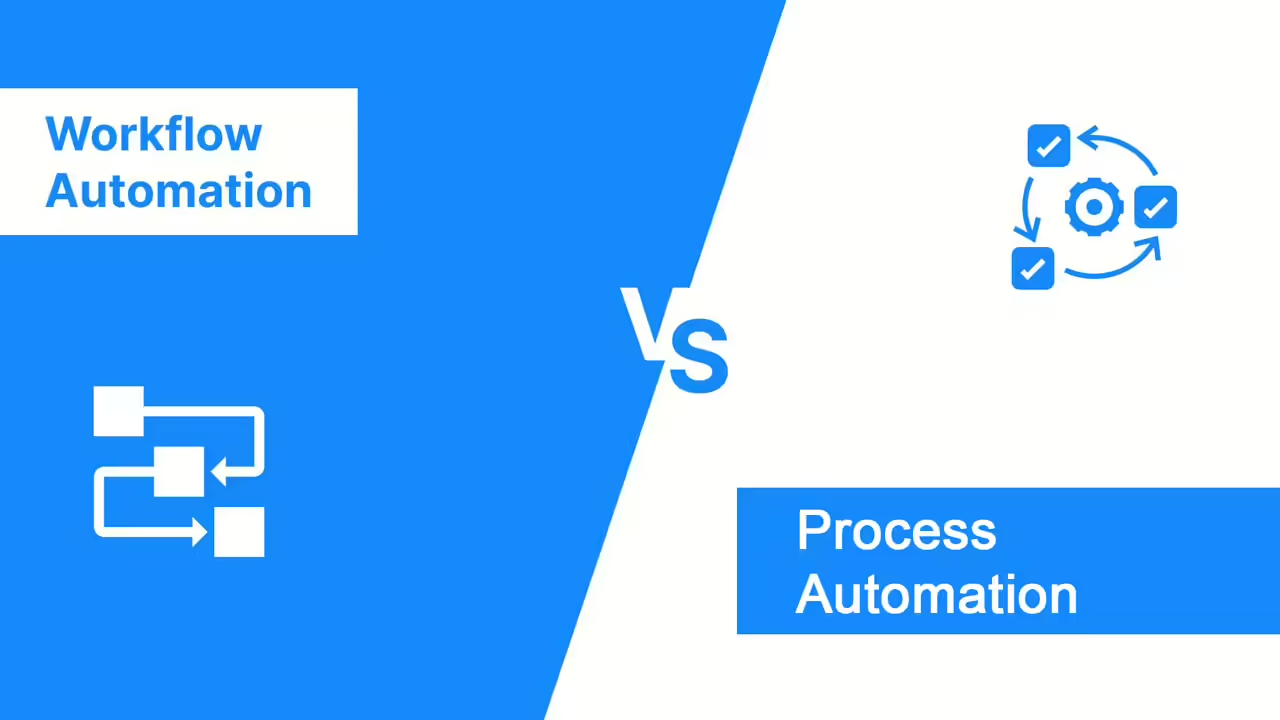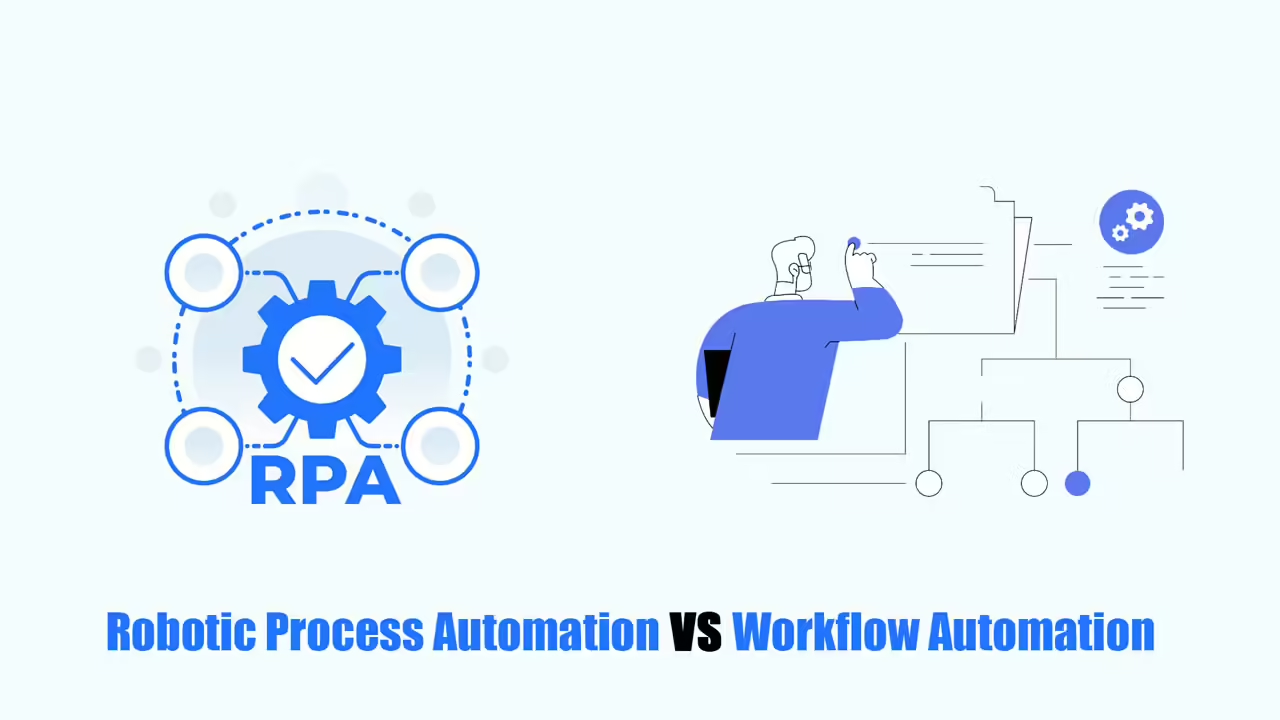Low code workflow automation platforms are taking the business world by storm. They empower startups and enterprises to design, streamline, and automate workflows quickly and affordably.
Unlike traditional coding, low-code platforms require minimal programming skills. Their user-friendly interfaces and focus on citizen developers make them ideal for product and IT teams. This allows them to: test new products rapidly; develop and offer microservices; experiment with different brand designs.
Ready to unlock the power of automation? In this guide, we’ll dive deep into the definition, benefits, and especially top nine low code workflow automation use cases and more.
What Is Low Code Workflow Automation?

Low code workflow automation is revolutionizing how businesses build and streamline processes. It empowers both business users and developers, regardless of coding expertise, to create and deploy applications, workflows, and automations.
Imagine digitizing and optimizing critical operations in minutes, freeing employees for higher-value tasks. Low code workflow platforms achieve this with a user-friendly, visual approach. Forget complex coding – drag-and-drop interfaces and pre-designed templates make building automations intuitive. Additionally, reusable components further accelerate development cycles.
In essence, low-code technology bridges the gap between IT and business teams. It empowers everyone to contribute to automation and digitization efforts, without the need for extensive coding knowledge.
Why Do You Need Low Code Workflow Automation Software?
Low code workflow automation platforms democratize application development. They allow users with minimal coding knowledge to automate digital processes within the application. This opens the door for “citizen developers” – computer-savvy employees outside of IT – to contribute to building solutions that directly address their needs.
Just a few years ago, this level of user involvement in development was unthinkable. Now, low-code tools empower collaboration between citizen developers and professional IT teams. Here’s why a low-code platform might be the perfect fit for your business:
Fast Time to Market
The beauty of low code workflow automation lies in its ease of use. It empowers both citizen developers and professional IT teams to build powerful automations quickly, with a gentle learning curve. Platforms that feel overly complex or confusing right from the start might not be the best fit.
Instead, look for an intuitive interface with drag-and-drop functionality, clear onboarding materials, and minimal coding requirements. By prioritizing a user-friendly experience, you’ll unlock the true potential of low-code automation and streamline your processes efficiently.
Effortlessly Integration
Don’t think of low-code/no-code as an island. It should seamlessly integrate with your existing infrastructure. Look for a platform that plays nicely with others – various products and platforms. This allows you to orchestrate complex workflows that span multiple systems and even leverage AI-powered tools for automated cleanup tasks. By prioritizing integration, you unlock the full potential of low-code/no-code to streamline your operations.
Self-service Capabilities
Low code no code workflow automation tools are a win-win for businesses. They bridge the knowledge gap by empowering citizen developers to automate tasks, which in turn frees up valuable IT staff time. This allows IT to focus on more complex projects while end-users can handle simpler requests without needing to rely on the service desk.
Pre-built Workflows
Simplicity remains key. Even when building custom workflows for your company, there’s no need to reinvent the wheel. Look for a low-code/no-code platform with a rich library of pre-built templates. These templates can jumpstart your automation journey, accelerating implementation and delivering a faster return on investment.

Scalability
Sustainable growth is a core aspiration for most businesses. Don’t let your automation platform hinder your ambitions. Choose a system that scales effortlessly to accommodate your expanding needs.
Look for a platform that can handle a high volume of tasks, processes, and activities – even if you’re not there yet. This future-proof approach ensures your automation solution grows alongside your business.
Top 9 Use Cases of Low Code Workflow Automation
Before diving into the world of low code workflow automation, consider your specific business needs. Not all platforms integrate seamlessly with existing applications. Leaders should carefully evaluate pros and cons to ensure the chosen solution empowers your team, not hinders them.
An ideal platform should adapt to your workflows, not the other way around. It should accelerate growth, boost productivity, and streamline processes.
To help you make an informed decision, let’s explore nine compelling low code workflow automation use cases and how these tools are impacting the modern workforce.
Enhance Business Process Management
One of the most powerful applications of low code workflow automation is streamlining business processes and workflows. This can significantly boost productivity and collaboration across teams.
Low-code platforms empower teams to tackle various challenges, from standardizing support requests to integrating new functionalities and creating defined workflows for projects. These tools enable teams to build custom solutions that address their specific needs, ultimately allowing them to work at their full potential.
By leveraging RPA Cloud, a low-code platform, they achieved a digital transformation of their core business processes in just four months. This included eliminating repetitive data entry, reducing service delivery times, and building greater operational resilience.
Boost Small Business Transactional Systems
Small businesses can leverage low-code tools to streamline their transactional systems. This translates to a smoother experience for both employees and customers. Low-code solutions bridge gaps in workflows, making order fulfillment and transactions seamless and efficient.
For instance, when you use RPA Cloud’s low-code automation platform. By automating digital HR processes, they freed up two to three hours daily for their HR team.
Create APIs & Integrating Platforms
Low-code tools empower citizen developers to streamline workflows by visually connecting applications through drag-and-drop interfaces. This reduces the burden on IT and DevOps teams, freeing them to tackle more complex tasks. Additionally, integrating applications creates a more unified system, optimizing resource utilization (time, money, and personnel).
Furthermore, low-code automation fosters a continuous improvement loop. By combining various data sources from integrated applications, businesses gain valuable insights for optimizing processes and boosting performance.
Streamline & Automate Workflows
Traditionally, streamlining workflows required expertise from IT and professional developers. Low-code platforms revolutionize this by empowering citizen developers – those with some technical knowledge but not necessarily coding skills – to automate tasks with ease.
These platforms offer a diverse toolbox, catering to organizations at any stage. From simple connectors to complex solutions like RPA Cloud, low-code tools address a wide range of needs. RPA excels at reaching into multiple systems and databases for automated tasks on a schedule. Low-code tools, on the other hand, can be simpler – think of them as bridges connecting applications or automating specific tasks.
Imagine a spreadsheet that automatically updates when someone fills out your website’s contact form. This is the power of low-code! By setting basic “If-Then” rules for decision-making and task assignment, citizen developers can eliminate repetitive tasks, freeing them to focus on more strategic work.
Empower Non-Technical Staff
Low code workflow automation software bridges the gap between business needs and technical expertise. It empowers non-technical employees to become citizen developers, solving problems and building solutions without extensive coding.
This frees up IT to focus on strategic initiatives like innovation and system security. Business users can leverage low-code platforms to create user-friendly web and mobile applications that streamline processes and enhance value. It’s departmental empowerment too! Marketers, for example, can automate tasks like website personalization and social media scheduling, boosting efficiency.
Modernize Legacy Systems
The rapid pace of technology can leave businesses stuck with outdated legacy systems. Low-code application platforms offer a solution! IT departments can leverage them to modernize these systems incrementally, without disrupting daily operations.
Create Industry-standard User Interface Designs
Low-code platforms make it easy to build applications with a professional look and feel. Citizen developers can leverage pre-built UI components and drag-and-drop functionality to ensure a clean, industry-standard design. This vast library of elements caters to both web and mobile development, allowing for rapid creation of user-friendly solutions.
Set Up Containerization
Containerization keeps things organized! Imagine each application running in its own secure box, called a container. These containers share the same operating system but operate independently. This prevents compatibility issues and technical debt as citizen developers build new applications.
Containerization isolates the systems citizen developers create from the main company system. This allows IT to review, improve, and integrate these low-code solutions smoothly before making them part of the central system.
Expand Current Offerings
Businesses often uncover hidden opportunities by analyzing how existing customers use their products. This can reveal entirely new services or features your customers crave.
Low code workflow automation tools become a double-edged sword here. They help you gather and analyze customer data to understand their needs. But that’s not all! These tools also empower you to quickly build prototypes or even launch new features based on those insights, all without extensive coding.
What Are Advantages of Low Code Workflow Automation?

Below are some typical benefits that low code workflow automation
Intuitive Interface
Low-code platforms are user-friendly, requiring no coding expertise. This empowers employees across the organization to build their own automations, improving their workflows without relying solely on IT.
Boosts Business Value
Low-code development goes beyond IT, impacting the entire business. Faster development cycles enable organizations to react quickly to market shifts and customer needs, ultimately leading to an enhanced customer experience.
Cost-Effective and Secure
Low-code platforms can handle complex enterprise needs. Many leading companies with strict security and uptime requirements rely on low-code solutions, demonstrating their robust capabilities for large-scale deployments.
Enhances Agility
Low-code’s intuitive interface allows for easy process creation and modification. This agility ensures you can adapt to changing regulations, market trends, and customer demands without complex code changes.
Streamlines Efficiency
Drag-and-drop functionality and user-friendly features accelerate the development process, allowing users to build automations quicker and see results faster.
What Are Difficulties of Using Low Code Workflow Automation?
Low code workflow automation is rapidly becoming a popular choice for application development. While it builds upon existing BPM (Business Process Management) systems, some organizations are cautious about adopting this new approach.
Here are some challenge of the low code workflow automation to consider:
Security and Compliance
IT teams require full visibility and control over workflows to ensure security, compliance, and internal regulations are met.
A thorough understanding of the overall process architecture is crucial for the IT department to effectively address organizational issues.
Low-code solutions should offer IT-approved tools that minimize the risk of shadow IT (unauthorized IT systems).
Learning Curve
Integrating any new technology requires a learning period. The complexity of the low-code platform determines the time needed for adaptation.
Integration Concerns
Introducing low-code might cause hesitation towards adopting other new tools due to potential integration complexities.
Job Security Fears
The focus of low code workflow automation is to optimize resource allocation, allowing employees to dedicate time to more strategic tasks. However, some employees might perceive this as a threat to their jobs.
Team Composition Challenges
A common misconception is that low-code platforms require everyone to have specialized development skills. While some technical knowledge is beneficial, most platforms are designed for user-friendly development.
Risk of Superficial Problem-Solving
Traditional development often involves business analysts who translate business needs into technical requirements. Low-code platforms might seem to bypass this step, potentially leading to a less comprehensive understanding of the problem.
To mitigate this, it’s important to include individuals with a strong understanding of the business domain within low-code development teams.
Focus on Launch, Not Long-Term Success
Low-code development should prioritize user needs throughout the entire process, not just at launch.
Clear communication of user requirements with stakeholders is essential for successful deployment.
Limited Feedback Loop
Low-code systems should bridge the gap between business users and developers. Insufficient communication channels can hinder or slow down feedback.
Conclusion
Business users can leverage low code workflow automation tools that adhere to your IT and development standards to tackle team-specific and personal challenges. This frees up IT resources to focus on strategic initiatives that drive growth.
Maintain centralized documentation of your low-code applications and automations. This ensures smooth process flow regardless of personnel changes.
Begin your low-code journey with cost-saving RPA Cloud. As you gain experience, you can tackle more complex projects.
Read more:












